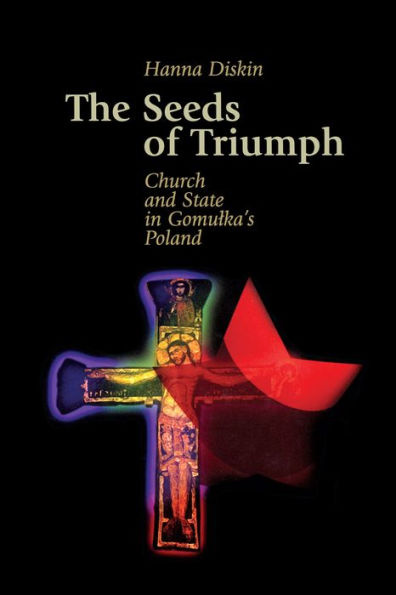Table of Contents
List of Tables
Preface
List of Abbreviations
Introduction
1. The First Period of Gomułka’s Rule
1.1 Policy Area Environments
1.1.1 The Roman Catholic Church
1.1.1.1 The Historical Power of the Church
1.1.1.2 Post-War Church Reorganization
1.1.1.3 Value Base and Positions on Current Issues
1.1.1.4 The Communist Regime
1.1.1.5 Elections and Parties
1.1.1.6 Demands from the Government and Modes of Struggle
1.1.1.7 Attitude towards the Vatican
1.1.2 The Population
1.1.2.1 Demographic Characteristics
1.1.2.2 Religious Participation
1.1.2.3 Devoutness According to Social Group
1.1.3 Pax and the Patriotic Priests
1.1.4 The Vatican
1.1.4.1 Pius XII
1.1.4.2 The Vatican Response to the Annulment of the Concordat
1.1.4.3 The New Boundaries
1.1.5 The Soviet Union
1.1.5.1 Analytical Framework
1.1.5.2 The Soviet Union and Poland: 1945—1948
1.1.5.3 The Soviet Union and the Church
1.2 Policy
1.2.1 Legal Background
1.2.2 Ideological Background
1.2.3 General Policy Characteristics
1.2.3.1 Environmental Factors—Perception and Impact on Policy
1.2.3.2 Objectives, Modes of Struggle, and Demands
1.2.4 Specific Policies
1.2.4.1 General
1.2.4.2 Policy in Relation to the 1947 Elections
1.2.4.3 The Annulment of the Concordat and Policy towards the Vatican
1.2.4.4 Pax as an Instrument of the Government
1.2.4.5 The Policy of Rewards and Concessions
1.2.4.6 The Policy of Restrictions
1.2.5 Summary of Government Policy
1.2.6 Personal Policy
1.2.6.1 Basic Positions and Values
1.2.6.2 Characteristics of Personal Policy
1.2.6.3 Restrictions
1.2.6.4 The Church as a Component in Gomulka’s Conception of the Polish Path to Socialism
2. The Stalinist Era
2.1 Policy Environments
2.1.1 The Roman Catholic Church
2.1.1.1 The Balance of Power during the Period
2.1.1.2 Organizational Consolidation
2.1.1.3 Value System and Positions on Current Issues
2.1.1.4 Response to Government Attack and Restriction
2.1.1.5 Church Concessions and the Desire to Maintain the National Formula
2.1.1.6 Attitude towards the Vatican
2.1.2 The Population
2.1.3 Pax and the Patriotic Priests
2.1.4 The Vatican
2.1.5 The Soviet Union
2.2 Policy
2.2.1 Legal Background
2.2.2 General Policy Characteristics
2.2.3 Specific Policy
2.2.3.1 The 1952 Elections
2.2.3.2 Policy towards the Vatican
2.2.3.3 Pax as a Government Tool
2.2.3.4 The Policy of Restrictions
2.2.3.5 Benefits and Concessions in Policy
2.2.4 Summary of Government Policy
3. The Second Period of Gomułka’s Rule
3.1 Policy Area Environments
3.1.1 The Roman Catholic Church
3.1.1.1 The Balance of Power during the Period
3.1.1.2 Church Organization
3.1.1.3 Changes in the Catholic Political Map
3.1.1.4 Cooperation and Concessions
3.1.1.5 Militancy and Methods of Struggle
3.1.2 The Population
3.1.2.1 General
3.1.2.2 Religious Consciousness and Links to the Church According to Social Status
3.1.3 Pax and the Christian-Social Society
3.1.3.1 Pax
3.1.3.2 The Christian-Social Society
3.1.4 The Vatican
3.1.5 The Soviet Union
3.2 Policy
3.2.1 Preliminary Comment
3.2.2 Legal Background
3.2.2.1 The Role of the Stalinist Period
3.2.2.2 A Comparison between the First and the Second Period of Gomułka’s Rule
3.2.2.3 Conclusions
3.2.3 Ideology versus Pragmatism
3.2.4 General Policy Attributes
3.2.4.1 The Perception of Environmental Conditions and Their Impact on Policy
3.2.4.2 The Psychological Environment
3.2.4.3 Goals and Demands
3.2.4.4 The Means of Struggle
3.2.5 Specific Policy
3.2.5.1 The January 1957 Elections
3.2.5.2 Policy towards the Vatican
3.2.5.3 Pax as an Instrument of the Government
3.2.5.4 The Policy of Benefits and Concessions
3.2.5.5 The Policy of Restrictions
3.2.6 A Summary of Government Policy
3.2.7 Personal Policy
3.2.7.1 General
3.2.7.2 Value Infrastructure
3.2.7.3 Attributes of Personal Policy
3.2.7.4 The Reflection of Policy Features in Gomułka’s Speeches
3.2.7.5 Changes in Position
3.2.7.6 The Relationship between Gomułka and Cardinal Wyszyński
3.2.7.7 Factional Opponents and Personal Advisers
4. Conclusion
4.1 Policy Area Environments
4.1.1 The Roman Catholic Church
4.1.2 The Population
4.1.3 The Soviet Union
4.2 Other Environments
4.3 Policy
4.3.1 Ideological and Legal Background
4.3.2 The Policy of Rewards and Concessions
4.3.3 The Policy of Restrictions
4.3.4 Personal Policy
4.4 The Balance of Power between Environments and
Policy Makers
5. Epilogue: The Post-Gomułka Era
5.1 The Communist Era (the 1970s and 1980s)
5.1.1 General Points
5.1.2 Selected Problems—Milestones along the Way
5.1.2.1 The Change of Government (December 1970) and the Beginning of the Gierek Era
5.1.2.2 Turning Point: Deteriorating Relations
5.1.2.3 The KOR (The Workers’ Defense Committee)
5.1.2.4 Facing the Solidarity Crisis
5.1.2.5 Facing Martial Law
5.1.2.6 The Polish Pope: Homecoming Visits and Contribution towards the Fall of Communism
5.1.2.7 From Gorbachev to the 1989 Revolution
5.2 The 1990s
5.2.1 Difficulties Faced by the Church in Post-Communist Poland in General
5.2.2 The Clerical ‘Offensive’ Following 1989
5.2.3 Growing Politicization: The Elections of 1990 and 1991
5.2.4 The 1993 Elections and the Change in the Episcopate’s Position after Defeat
5.2.5 The Concordat and the Holy See
5.3 The New Constitution
5.4 The Polish Church’s Position toward Europe and the Integration of Poland within It
5.5 Conclusion
Notes
Bibliography
Interviews
Index



